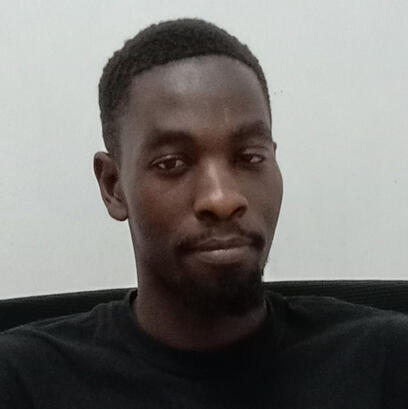
Hi, I'm Isaack Odera
I am a passionate and detail-oriented data enthusiast with strong creativity, time management, team collaboration, and project management skills. My Data Science training at Moringa School has sharpened my analytical capabilities, making me proficient in SQL, Excel, Python, Big Data technologies, Microsoft Power BI, machine learning algorithms, and building ELT/ETL pipelines for complex analytical tasks.I have participated in multiple hackathons including:1. Women In Data Science(WiDS) Datathon 2025, where I worked on predicting ADHD in females using brain imaging and behavioral data,2. EYC Hackathon, contributing to Urban Heat Island (UHI) effect prediction in urban centers using satellite data,3. Project Eagle by Kenya Association of Manufacturers, and4. Tech Expo 2024 hackathon.These experiences enhanced my practical data analysis skills, teamwork, and problem-solving abilities in high-stakes, collaborative environments.My objective is to build a long-term career in the data industry as a data analyst, where I can continue to grow and apply my skills in a collaborative and impactful setting.Alongside my data journey, I am a passionate backend developer with a strong foundation in building scalable systems. Through mentorship and self-learning, I have embraced emerging technologies such as blockchain to pursue innovative backend solutions. My goal is to contribute to decentralized AI systems and blockchain-powered platforms in dynamic, collaborative teams.Whether working on data pipelines or backend APIs, I thrive in fast-paced, purpose-driven environments and continuously seek to grow in both the data and blockchain ecosystems.
PROJECTS
1. Ubarn Heat island effect( EY Hackathon)
Participated in the EY 2025 Hackathon, where we addressed the challenge of predicting the Urban Heat Island (UHI) effect in rapidly growing urban centers. The UHI effect refers to the phenomenon where urban areas experience significantly higher temperatures than surrounding rural areas due to dense infrastructure, limited vegetation, and extensive heat-absorbing surfaces such as asphalt and concrete.To model and predict UHI-prone zones, we used satellite-derived thermal imagery from Landsat and Sentinel missions, combined with land use classifications, building footprint data, and climate indicators. I applied vegetation indices such as NDVI to evaluate green cover, and analyzed different surface types to assess how their material composition influences heat absorption and retention.This project deepened my understanding of the intersection between urban design, environmental sustainability, and geospatial intelligence, and reinforced the importance of satellite-based monitoring for effective climate adaptation and urban planning.
2. ADHD modeling (WiDS hackathon)
Served as the team lead in the WiDS Datathon 2025, where we developed a machine learning model to predict ADHD diagnosis in women using brain connectome matrices derived from fMRI data.This involved working with complex, high-dimensional neuroimaging data and socio-behavioral metrics like SDQ (Strengths and Difficulties Questionnaire). I gained hands-on experience in data preprocessing, dimensionality reduction using PCA, and building multi-label classification models using Python and Scikit-learn.Our team ranked in the Top 50 on the global leader board, a reflection of our effective collaboration and model performance. This project deepened my understanding of applied machine learning in the healthcare domain, especially for the early detection of neuro-developmental disorders in underrepresented groups (women).
3. Tokenix (Tech expo 2024 hackathon)
Served as the sole backend developer in a team project where we built a decentralized ticketing application using Web3 technologies on the Internet Computer Protocol (ICP) blockchain during the Tech Expo 2024 Hackathon.Our project was inspired by real-world issues in centralized ticketing platforms, including frequent system outages, scalping via bots, and unjustified price inflations in secondary markets. We aimed to solve these problems by leveraging blockchain’s transparency and decentralization to create a fair, resilient, and secure ticketing system.I was responsible for the entire backend infrastructure, smart contract integration, and secure data flow across the dApp. This required deep collaboration with the frontend team, iterative testing, and deploying canister smart contracts on the ICP blockchain network.Our solution was well-received and selected to advance to the Mega Hackathon, marking a key achievement for our team. This project strengthened my technical expertise in blockchain and backend systems, while also highlighting the importance of cross-functional teamwork in delivering impactful real-world solutions.
4. Project Eagle hackathon
Served as the backend developer in a team tasked with building a web-based analytics dashboard to track and visualize Kenya’s export and import data, using datasets provided by the Kenya Revenue Authority (KRA).Given the large-scale nature of the data, we leveraged open-source technologies such as Python (Flask) and DuckDB to perform efficient, in-memory SQL-based big data analysis. One of the key analytical tasks involved examining correlations between various tax categories and modeling how changes in tax policies could affect Kenya’s import and export behavior.My role involved data cleaning, back-end API development, and integrating machine learning models to provide deeper insights—such as how certain tax adjustments might influence trade volumes, especially for VAT and excise duties. This not only demonstrated the power of data-driven policy simulation, but also helped build a dashboard that could support evidence-based decision-making for national trade strategy.